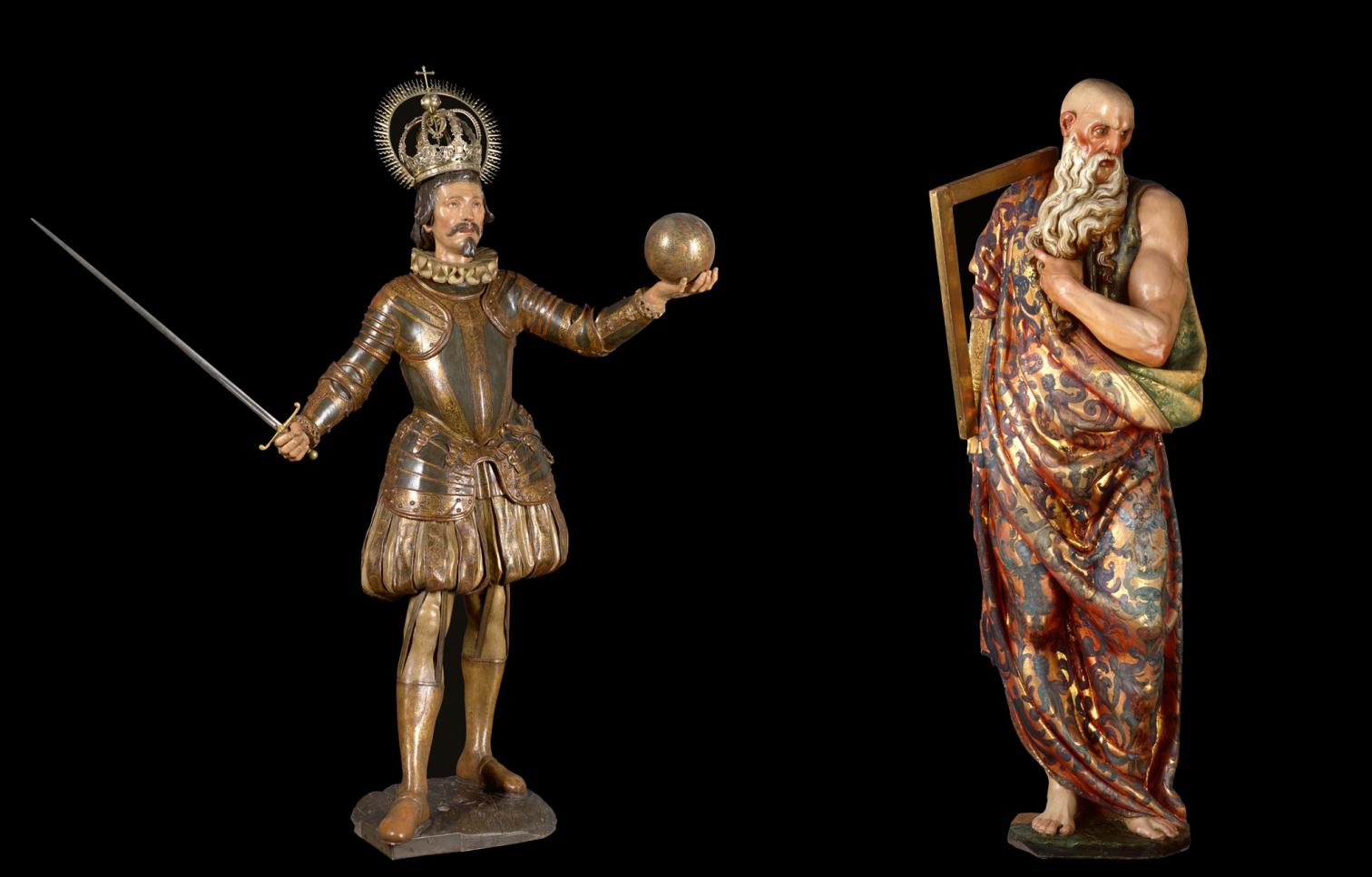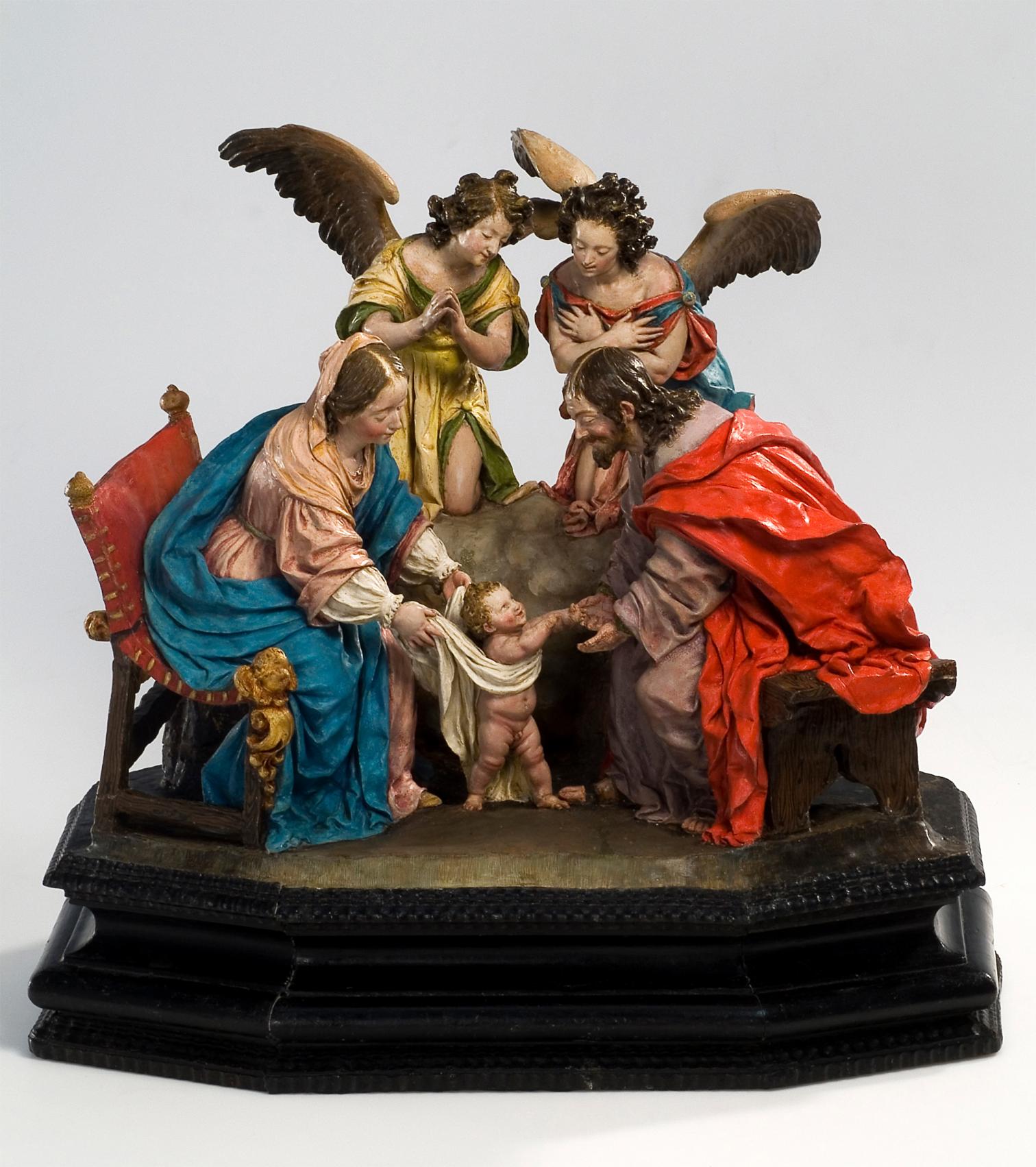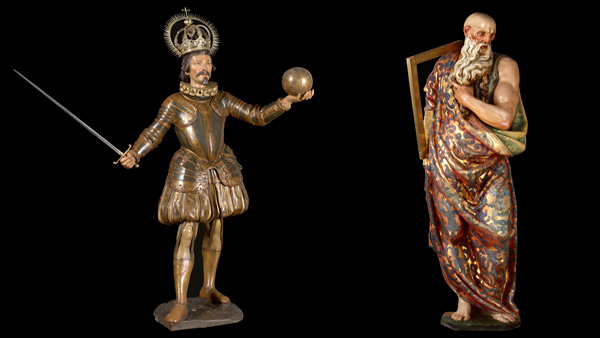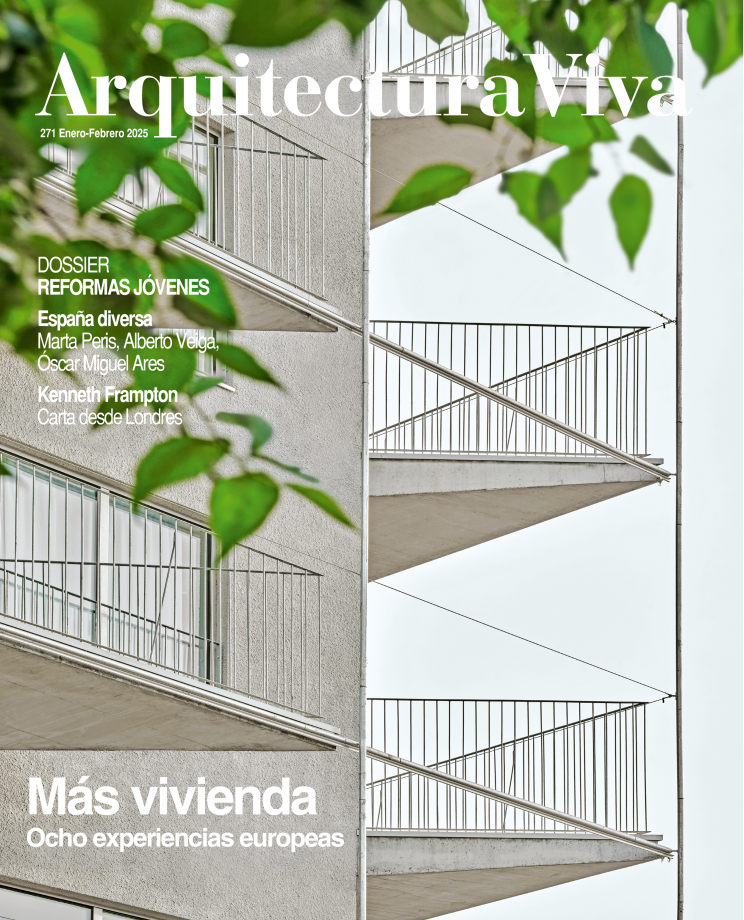
Izquierda: San Fernando. Pedro Roldán (escultor) y Luisa de Valdés (policromadora). Madera policromada y postizos h. 1671. Catedral de Sevilla
Derecha: Santo Tomás. Gaspar Becerra (escultor) y Gaspar de Hoyos y Gaspar de Palencia (policromadores). Madera policromada 1558-62 (talla) y 1570-79 (policromía). Catedral de Astorga (León), retablo mayor
Until Hittorff discovered the bright colors of Greek temples, we imagined ancient times with the washed appearance of marble. Time erased the coats of paint that had covered buildings and statues, and the aesthetic values that embraced the elegant neutrality of classical vestiges condemned the expressive function of color to oblivion. Notwithstanding, the polychromatic tradition remained very alive in the realm of religious imagery, where color conferred a convincing dose of humanity upon sculptural figures: a doctrinal strategy that reached its prime in the Spain of the Counter-Reformation, as attested by ‘Hand in Hand,’ an exhibition on view through 2 March which the Prado presents with an exquisite mix of works it owns and others on loan from elsewhere, as much from ecclesiastical sources as from other museums. Associated during the Baroque period with Divinity (images that came alive, miraculous interventions, angelic workshops), woodcarving was perfected like a painstaking task which was not considered complete until the painter got his part done. So it was that the Spanish Golden Age brought about a fellowship among different crafts and disciplines that also included the architecture of altarpieces, procession floats, and liturgical scenes, in pursuit of a total work of art, rich with meaning, that would help to spread the faith in a spectacular, theatrical, emotive, ultimately effective way.
El País: El Museo del Prado acoge el prodigioso espectáculo de la escultura policromada
El Mundo. La Roldana, escultora de reyes y ángeles: "Esta exposición era una deuda histórica"

Los primeros pasos de Jesús. Luisa Roldán, La Roldana Terracota policromada h. 1692-1704. Museo de Guadalajara






